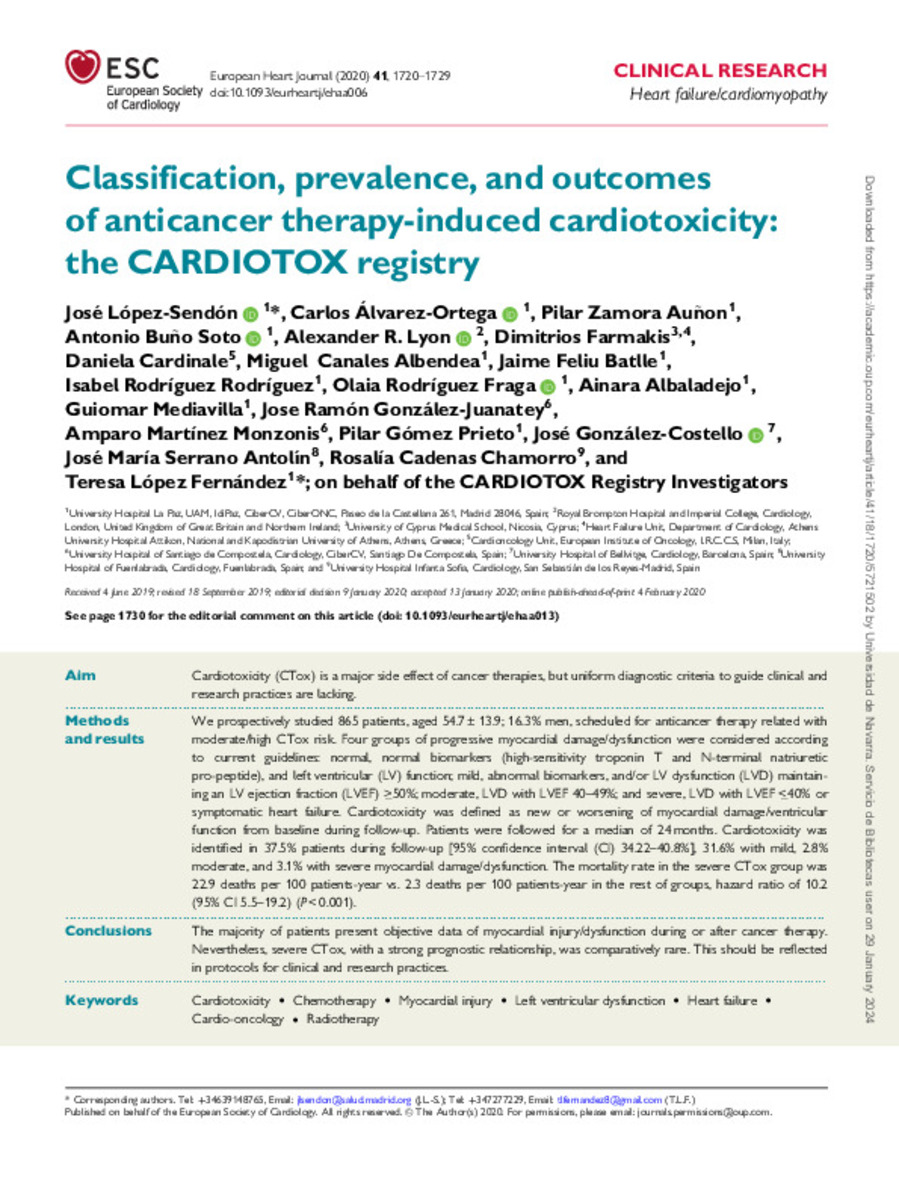Classification, prevalence, and outcomes of anticancer therapy-induced cardiotoxicity: the CARDIOTOX registry
Keywords:
Cardiotoxicity
Chemotherapy
Myocardial injury
Left ventricular dysfunction
Heart failure
Cardio-oncology
Radiotherapy
Editorial note:
Copyright © 2020, Published on behalf of the European Society of Cardiology.
Citation:
Canales-Albendea, M. A. (Miguel Ángel); López-Sendón, J.L. (J. L.); Álvarez-Ortega, C. (Carlos); et al. "Classification, prevalence, and outcomes of anticancer therapy-induced cardiotoxicity: the CARDIOTOX registry". European Heart Journal. 41 (18), 2020, 1720 - 1729
Statistics and impact
0 citas en

0 citas en

Items in Dadun are protected by copyright, with all rights reserved, unless otherwise indicated.







